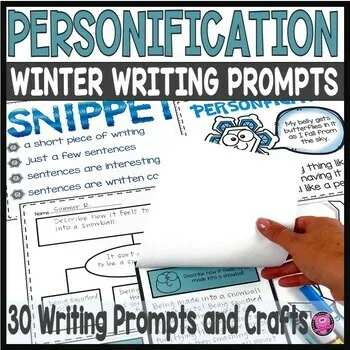Why not include a variety of personification writing exercises that your pupils can use to enhance their writing at a young age?
Personification is assigning human qualities or characteristics to a non-human, such as an animal or an object. It's a fantastic language technique to improve your kids' writing!
If you're planning to initiate the study of figurative language technique of personification to your students, you've come to the right blog. Read along to discover more about PERSONIFICATION!
4 BENEFITS OF USING PERSONIFICATION IN YOUR WRITING STYLE
Personification in writing has a major influence since it gives a non-human thing more life and vitality while also emphasizing a human quality.
The major goal of adopting this technique is to seize the readers' attention and emotional support while making the entire piece stand out and be noteworthy.
Here are some interesting reasons of teaching the basics of personification to your students:
1. Stimulate The Learners' Creativity In The English Language
Children will sow the seeds of imagination and they will be able to identify figurative speech better when they are familiar with words of personification.
They will be able to point out some everyday examples of personification they'll hear people say, or see in a book. The more familiar they are, they are able to craft their own sentences in due time!
2. Know The Real Meaning Of What Is Being Said Or Written
The lack of understanding and using figures of speech leaves the reader confused or clueless about the real meaning of a text. so utilizing personification in the classroom can enhance the students' learning and understanding.
Students can mix up literal combination with the figurative meaning. This could result in the student feeling frustrated and lacking confidence in their ability to use the English language and this is what you need to avoid.
3. Make It Easier For Kids To Easily Get A Connection
Personification is a fun form of figurative language that is used to grab the readers' attention and is a great way for students to form a connection with the things which are described.
It has a vividness and a brilliance that will draw readers in and make them remember the text for a long time.
4. Appreciate Different Styles of Writing
Adding personification in the writing style enhances the beauty and enhances its flavor. It makes the sentence deeper and leaves the reader with a sense of wonder which develops kids to think out of the box and explore more.
It brings life to the words used by the writer and in return, your young learners may mimic this style as they are fully engaged.
HOW TO ENGAGE KIDS IN THE CLASSROOM WITH PERSONIFICATION
It might be a bit challenging teaching kids about this specific figurative language. You may explain that personification is a type f figurative language that can be found in poems, songs, and stories.
You can even explore personification by tackling poems and stories, and letting them identify which statements are the figure of speech. Just look for examples where something that is clearly not a person has been given human emotions.
Try to come up with common examples that they've probably heard of and are easy to understand. Then use a text or poem and see if children can find any examples of where personification is used.
Tell students that authors use personification to help their readers picture something more vividly. Provide an example for students (e.g., "The wind howled in the night.", "My flowers were begging for water." and "The thunder was grumbling in the distance.") You may point out the figurative meaning instead.
Another great way to get pupils to start thinking about personification is by asking them to look at a specific object. Then get them to see if they can think of ways to compare it to a person.
Studying personification is one of the best tools of all time in helping children understand the writer's message better. This creative figure of speech gives poetry or stories interest and fun.
Wanna try using this in your class? Here are some Personification Winter Writing Prompts that you can use with your students that are perfect for the season. This is ideally for 2nd-4th grade students and are great writing lessons to use in January, February, winter, or anytime of the year!
These 30 personification writing short stories about their snowflake personification character are a great approach for kids to comprehend and create stories that aren't about the real world but instead are set in an imaginative world.
Figures of speech are widely used, across all forms of language expression. Be it in written or spoken form, in formal or informal structures or in standard speech or in slang, the use of the various figures of speech is common.
The importance of learning and using them is indeed beneficial for every child to be able to jumpstart their speaking, writing, and reading in English.
Let's try different approaches to engaging and motivating our pupils. I hope you like reading my blog as much as I do! Enjoy your PIGARRIFIC week and look forward to the upcoming blog. 🐷



